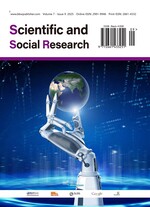AI-Driven Corporate Social Responsibility Communication: Practical Applications, Ethical Considerations, and Development Pathways
Abstract
The deployment of artificial intelligence in corporate philanthropy communication confers distinct advantages: algorithmic analytics afford a granular diagnosis of social needs, while generative models facilitate the orchestration of imaginative intervention scenarios. By open-sourcing AI assets and fostering co-creation among heterogeneous actors, firms can automatically produce multimodal philanthropic content, thereby catalyzing a paradigmatic shift away from legacy charitable formats. Yet this technologization simultaneously surfaces salient ethical tensions. Restrictive interpretations of corporate social responsibility, precarious protection of user privacy and rights, and technological over-dependence that erodes user autonomy exemplify the emergent dilemmas. To countervail these risks, corporations must integrate AI-based social initiatives into strategic master plans, intensify comprehensive technological application and iterative innovation, and bolster internal governance mechanisms while refining external philanthropic legitimacy. Moreover, cross-sector alliances with diverse non-profit organizations should be cultivated to constitute an interstitial “philanthropic ecosystem” that aggregates multi-actor resources, jointly addresses complex social problems, and accelerates societal advancement and sustainable development.
References
Ma XL, Zhang JK, 2005, Current Situation and Development Prospects of Public Welfare Communication. Contemporary Communication, 2005(3): 23–25. https://doi.org/CNKI:SUN:DACB.0.2005-03-009
Xia JX, Yang WF, 2020, What is Public Welfare Communication: A Study on the Concept of Public Welfare Communication in the Digital Communication Era. Advertising Panorama (Theoretical Edition), 18(4): 83–89. https://doi.org/CNKI:SUN:GGDL.0.2020-04-013
Lu WK, Chen WJ, 2021, Public Welfare Communication on Short Video Platforms and its Problems: A Case Study of Douyin. Youth Journalist, 41(4): 38–39. https://doi.org/10.15997/j.cnki.qnjz.2021.04.016
Lai ZL, 2020, Innovative Exploration of Public Welfare Communication in the Intelligent Media Era. Youth Journalist, 40(15): 82–83. https://doi.org/10.15997/j.cnki.qnjz.2020.15.039
Wang YL, Li JL, Liu J, 2009, Construction and Interpretation of the Four-dimensional Framework for Public Welfare Communication. Journalism and Mass Communication, 12(4): 18–20. https://doi.org/CNKI:SUN:NEWS.0.2009-04-006
Chen XD, 2012, Public Welfare Communication Skills for Brands. International Public Relations, 10(3): 81. https://doi.org/10.16645/j.cnki.cn11-5281/c.2012.03.022
Shu YP, Gu Y, 2012, Corporate Public Welfare Communication: Transcending Cause-related Marketing. Modern Communication (Journal of Communication University of China), 34(9): 94–97 + 110. https://doi.org/CNKI:SUN:XDCB.0.2012-09-021
Yang LY, 2021, Cause-related Marketing: A Study on Measures for Balancing Corporate Social Responsibility and Economic Benefits. Chinese & Foreign Corporate Culture, 36(3): 16–17. https://doi.org/CNKI:SUN:ZWQW.0.2021-03-005
Bian W, 2023, Construction of Corporate Public Welfare Communication Paths in the Digital Media Era. Foreign Economic Relations & Trade, 42(4): 21–24. https://doi.org/CNKI:SUN:HLJW.0.2023-04-005

